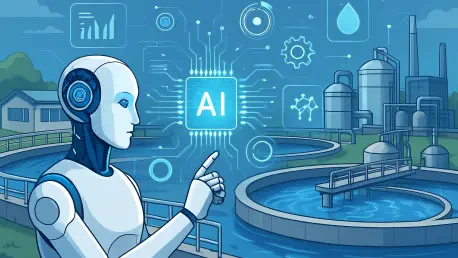Diving into the world of water treatment innovation, we’re thrilled to sit down with Oscar Vail, a technology expert whose groundbreaking work at the intersection of environmental engineering and machine learning is making waves. Oscar has been instrumental in the development of EnviroPiNet, a cutting-edge software tool designed to predict biofilter performance in water treatment with remarkable accuracy. In this conversation, we explore the challenges of maintaining water purity, the unique blend of physical principles and advanced algorithms behind EnviroPiNet, and the future potential of this technology in transforming how the water industry operates.
Can you give us an overview of what EnviroPiNet is and the primary motivation behind its creation?
EnviroPiNet, or Environmental Buckingham Pi Neural Network, is a software tool we developed to predict how well biofilters perform in water treatment facilities. Biofilters are critical for removing contaminants like organic carbon compounds from wastewater before it’s turned back into drinking water. The motivation came from a real need in the water industry to better understand and manage biofilter performance. Without accurate predictions, it’s tough to know when a biofilter is underperforming or needs replacement, which can compromise water quality. We wanted to create a free, accessible tool that could help operators make smarter decisions using data-driven insights.
What specific challenges in the water treatment industry were you aiming to address with this tool?
One of the biggest challenges is the unpredictability of biofilter performance over time. As these filters work to clean wastewater, they accumulate waste material, which gradually reduces their efficiency. The industry often struggles with limited data and complex environmental conditions in treatment facilities, making it hard to anticipate when a biofilter might fail. EnviroPiNet tackles this by providing a reliable way to model performance, even with sparse data, helping to prevent lapses in water purity and reduce the costs of unnecessary maintenance or replacements.
Could you explain the role of biofilters in water treatment and why their effectiveness matters so much?
Biofilters are a sustainable and environmentally friendly technology used in water treatment to remove pollutants. They’re essentially layers of bacteria that capture and break down contaminants like organic carbon compounds as wastewater passes through. Their effectiveness is crucial because these compounds, which come from sources like human waste or agricultural runoff, can affect water safety and taste if not properly removed. If a biofilter isn’t working well, it can let harmful substances slip through, so maintaining their performance directly impacts the quality of tap water we rely on every day.
How does EnviroPiNet integrate machine learning with physical modeling to achieve its predictions?
EnviroPiNet combines machine learning with a physical framework based on the Buckingham Pi theorem, which helps us identify key dimensionless parameters that govern biofilter behavior. The machine learning component then uses these parameters to learn patterns from data we’ve gathered from lab tests and existing research. By grounding the model in physical principles, we ensure it’s not just a black box—it respects the real-world dynamics of water treatment. This hybrid approach allows us to make predictions that are both accurate and scientifically sound, even when data is limited.
Can you elaborate on the data challenges you faced while developing EnviroPiNet and how you managed them?
Data challenges are a huge hurdle in environmental biotechnology. Wastewater treatment facilities are complex, dynamic environments, and collecting high-quality, diverse data is tough due to inconsistent monitoring, varying conditions, and sometimes outdated equipment. We addressed this by compiling a dataset from previous studies and our own lab experiments, carefully curating it to ensure reliability. We used 80% of this data to train the model and reserved 20% for testing, which helped us validate EnviroPiNet’s predictions. It wasn’t perfect, but it allowed us to build a robust tool despite the constraints.
With EnviroPiNet achieving up to 90% accuracy in predictions, can you walk us through how you evaluated its performance?
We were really excited to see EnviroPiNet hit 90% accuracy. To evaluate it, we split our dataset into training and testing portions—80% for training the model to recognize patterns and 20% for testing how well it could predict outcomes it hadn’t seen before. This split mimics real-world scenarios where you don’t have all the data upfront. When we compared it to other methods, like PCA-based models which hit about 50% accuracy or autoencoder techniques at just 20%, EnviroPiNet clearly outperformed them. We believe the combination of physical principles with machine learning gave it that edge.
What do you see as the broader impact of EnviroPiNet for the water industry and beyond?
The potential impact of EnviroPiNet is significant. For the water industry, it offers a way to optimize biofilter operations without relying on costly, time-consuming physical tests. This can save money, improve efficiency, and most importantly, ensure cleaner, safer drinking water. Beyond that, we’re exploring how this tool—or its underlying approach—could be adapted to other fields, like healthcare settings where similar predictive challenges exist. It’s about creating smarter, data-driven solutions for complex systems, and I think we’ve only scratched the surface of what’s possible.
What is your forecast for the future of predictive tools like EnviroPiNet in environmental engineering?
I’m incredibly optimistic about the future of predictive tools in environmental engineering. As data collection methods improve and we integrate more real-time monitoring technologies, tools like EnviroPiNet will become even more precise and widely applicable. I foresee a shift where these kinds of hybrid models—blending physical science with machine learning—become standard for managing critical infrastructure like water treatment systems. My hope is that within the next decade, we’ll see these tools not just predicting performance but also guiding automated adjustments in real time, making our environmental systems more resilient and sustainable.









